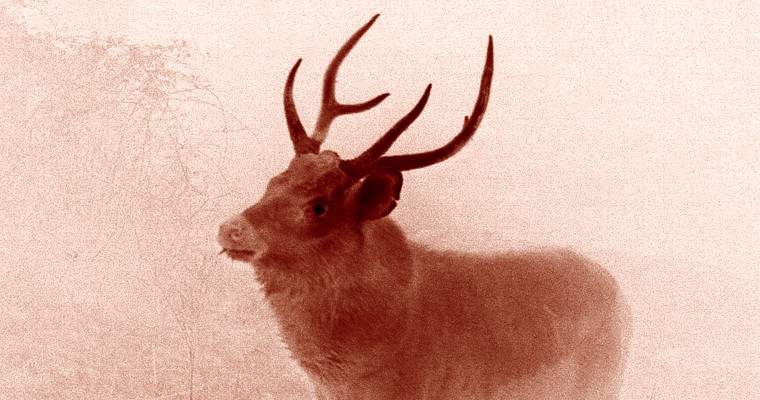
Feral deer in Victoria
More than a million deer now trample Victoria’s national parks, yet the Victorian government is yet to list them as a pest animal.

More than a million deer now trample Victoria’s national parks, yet the Victorian government is yet to list them as a pest animal.

More than a million deer now trample Victoria’s national parks, yet the Victorian government is yet to list them as a pest animal.
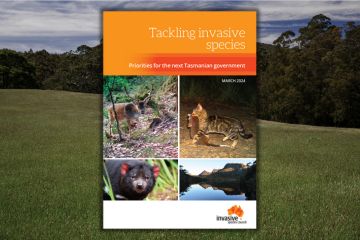
Tasmania is a remarkable island state with native animals and plants found nowhere else on earth, some of the most spectacular protected areas in Australia, and highly valued agriculture, forestry, and tourism sectors.
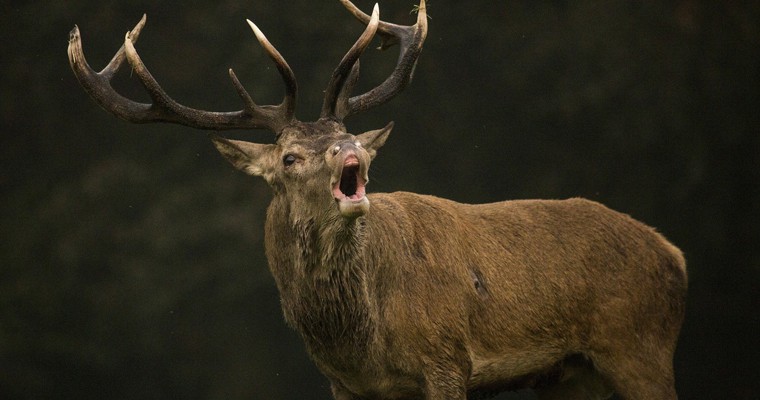
Feral deer are probably Australia’s worst emerging pest problem, causing damage to the natural environment and agricultural businesses.
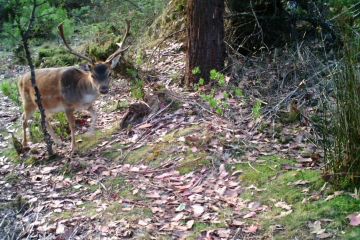
The Invasive Species Council has 8 recommendations to be implemented in 2024 to mitigate the negative impacts of feral deer on the environment, economy, and public safety.
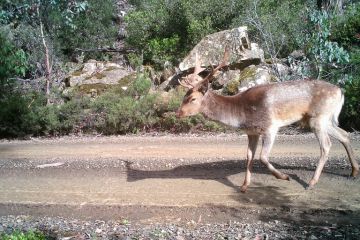
8 recommendations for the Plan to be successful in mitigating the negative impacts of feral deer on the environment, economy, and public safety,
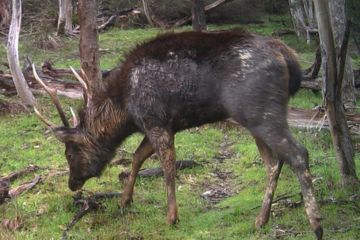
This fact sheet illustrates the effectiveness of recreational hunting, reviews its pros and cons as well as compares and contrasts it with professional shooting.

The Invasive Species Council estimates that at least $2.19 million per annum is needed for the next four years to effectively manage deer populations, a cost that represents only 2% of the annual economic impact of feral deer.

Environmental and First Nations organisations have written to UNESCO, the United Nations body responsible for World Heritage sites, seeking intervention on the growing impacts of feral deer in and around the Tasmanian Wilderness World Heritage Area (TWWHA).
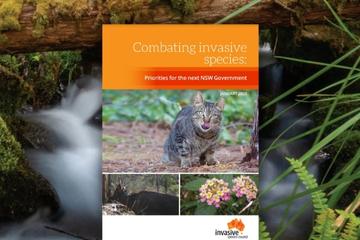
We face a crisis and current measures and resources in NSW are insufficient to halt and mitigate the impact of established invasive species and prevent the arrival and spread of new invasive species. In this document we detail priority actions the next NSW government can take that will strengthen the NSW biosecurity system and address priority environmental threats from invasive species.

Feral deer in Tasmania have been increasing in numbers and distribution at an alarming rate, with the current population likely exceeding 100,000 and covering 27% of the State. This ever expanding population now threatens Tasmania’s unique and outstanding natural and cultural values along with highly valued agriculture and forestry.

Feral deer populations are rapidly growing and spreading across Victoria damaging the natural environment and causing havoc for farmers and motorists.
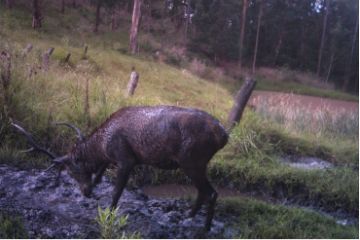
The Invasive Species Council welcomes the development of a new Feral Deer Management Strategy to replace the Feral Deer Management Strategy 2013-18.
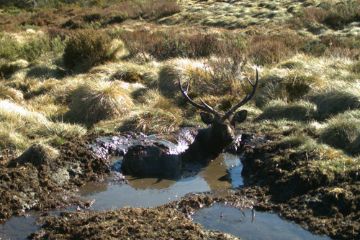
New report from Frontier Economics warns not controlling the impacts of feral deer in Victoria could cost the community $2.2 billion.
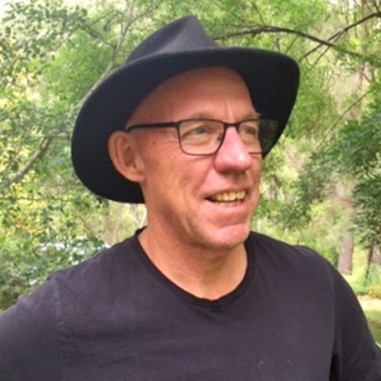
Peter Jacobs has an extensive background in conservation programs and is executive officer of the Victorian Deer Community Control Network.

More than a million deer now trample Victoria’s national parks, yet the Victorian government is yet to list them as a pest animal.

More than a million deer now trample Victoria’s national parks, yet the Victorian government is yet to list them as a pest animal.

Tasmania is a remarkable island state with native animals and plants found nowhere else on earth, some of the most spectacular protected areas in Australia, and highly valued agriculture, forestry, and tourism sectors.

Feral deer are probably Australia’s worst emerging pest problem, causing damage to the natural environment and agricultural businesses.

The Invasive Species Council has 8 recommendations to be implemented in 2024 to mitigate the negative impacts of feral deer on the environment, economy, and public safety.

8 recommendations for the Plan to be successful in mitigating the negative impacts of feral deer on the environment, economy, and public safety,

This fact sheet illustrates the effectiveness of recreational hunting, reviews its pros and cons as well as compares and contrasts it with professional shooting.

The Invasive Species Council estimates that at least $2.19 million per annum is needed for the next four years to effectively manage deer populations, a cost that represents only 2% of the annual economic impact of feral deer.

Environmental and First Nations organisations have written to UNESCO, the United Nations body responsible for World Heritage sites, seeking intervention on the growing impacts of feral deer in and around the Tasmanian Wilderness World Heritage Area (TWWHA).

We face a crisis and current measures and resources in NSW are insufficient to halt and mitigate the impact of established invasive species and prevent the arrival and spread of new invasive species. In this document we detail priority actions the next NSW government can take that will strengthen the NSW biosecurity system and address priority environmental threats from invasive species.

Feral deer in Tasmania have been increasing in numbers and distribution at an alarming rate, with the current population likely exceeding 100,000 and covering 27% of the State. This ever expanding population now threatens Tasmania’s unique and outstanding natural and cultural values along with highly valued agriculture and forestry.

Feral deer populations are rapidly growing and spreading across Victoria damaging the natural environment and causing havoc for farmers and motorists.

The Invasive Species Council welcomes the development of a new Feral Deer Management Strategy to replace the Feral Deer Management Strategy 2013-18.

New report from Frontier Economics warns not controlling the impacts of feral deer in Victoria could cost the community $2.2 billion.

Peter Jacobs has an extensive background in conservation programs and is executive officer of the Victorian Deer Community Control Network.

More than a million deer now trample Victoria’s national parks, yet the Victorian government is yet to list them as a pest animal.

More than a million deer now trample Victoria’s national parks, yet the Victorian government is yet to list them as a pest animal.

Tasmania is a remarkable island state with native animals and plants found nowhere else on earth, some of the most spectacular protected areas in Australia, and highly valued agriculture, forestry, and tourism sectors.

Feral deer are probably Australia’s worst emerging pest problem, causing damage to the natural environment and agricultural businesses.

The Invasive Species Council has 8 recommendations to be implemented in 2024 to mitigate the negative impacts of feral deer on the environment, economy, and public safety.

8 recommendations for the Plan to be successful in mitigating the negative impacts of feral deer on the environment, economy, and public safety,

This fact sheet illustrates the effectiveness of recreational hunting, reviews its pros and cons as well as compares and contrasts it with professional shooting.

The Invasive Species Council estimates that at least $2.19 million per annum is needed for the next four years to effectively manage deer populations, a cost that represents only 2% of the annual economic impact of feral deer.

Environmental and First Nations organisations have written to UNESCO, the United Nations body responsible for World Heritage sites, seeking intervention on the growing impacts of feral deer in and around the Tasmanian Wilderness World Heritage Area (TWWHA).

We face a crisis and current measures and resources in NSW are insufficient to halt and mitigate the impact of established invasive species and prevent the arrival and spread of new invasive species. In this document we detail priority actions the next NSW government can take that will strengthen the NSW biosecurity system and address priority environmental threats from invasive species.

Feral deer in Tasmania have been increasing in numbers and distribution at an alarming rate, with the current population likely exceeding 100,000 and covering 27% of the State. This ever expanding population now threatens Tasmania’s unique and outstanding natural and cultural values along with highly valued agriculture and forestry.

Feral deer populations are rapidly growing and spreading across Victoria damaging the natural environment and causing havoc for farmers and motorists.

The Invasive Species Council welcomes the development of a new Feral Deer Management Strategy to replace the Feral Deer Management Strategy 2013-18.

New report from Frontier Economics warns not controlling the impacts of feral deer in Victoria could cost the community $2.2 billion.

Peter Jacobs has an extensive background in conservation programs and is executive officer of the Victorian Deer Community Control Network.
Get our blog the Feral Herald delivered to your inbox.
Our protected areas are being trashed, trampled, choked and polluted by an onslaught of invaders. Invasive species are already the overwhelming driver of our animal extinction rate, and are expected to cause 75 of the next 100 extinctions.
But you can help to turn this around and create a wildlife revival in Australia.
From numbats to night parrots, a tax-deductible donation today can help defend our wildlife against the threat of invasive weeds, predators, and diseases.
As the only national advocacy environment group dedicated to stopping this mega threat, your gift will make a big difference.
A silent crisis is unfolding across Australia. Every year, billions of native animals are hunted and killed by cats and foxes. Fire ants continue to spread and threaten human health. And the deadly strain of bird flu looms on the horizon. Your donation today will be used to put the invasive species threat in the media, make invasive species a government priority, ensure governments take rapid action to protect nature and our remarkable native wildlife from invasives-led extinction, death and destruction.
If you are having trouble submitting a form, please read this guide.
Please fill out the following form and one of our team will be in contact to assist as soon as possible. Please make sure to include any helpful information, such as the device you were using (computer, tablet or mobile phone) and if known, your browser (Mozilla Firefox, Chrome, Safari etc)
"*" indicates required fields
Dear Project Team,
[YOUR PERSONALISED MESSAGE WILL APPEAR HERE.]
I support the amendment to the Kosciuszko National Park Wild Horse Heritage Management Plan to allow our incredible National Parks staff to use aerial shooting as one method to rapidly reduce feral horse numbers. I want to see feral horse numbers urgently reduced in order to save the national park and our native wildlife that live there.
The current approach is not solving the problem. Feral horse numbers have rapidly increased in Kosciuszko National Park to around 18,000, a 30% jump in just the past 2 years. With the population so high, thousands of feral horses need to be removed annually to reduce numbers and stop our National Park becoming a horse paddock. Aerial shooting, undertaken humanely and safely by professionals using standard protocols, is the only way this can happen.
The government’s own management plan for feral horses states that ‘if undertaken in accordance with best practice, aerial shooting can have the lowest negative animal welfare impacts of all lethal control methods’.
This humane and effective practice is already used across Australia to manage hundreds of thousands of feral animals like horses, deer, pigs, and goats.
Trapping and rehoming of feral horses has been used in Kosciuszko National Park for well over a decade but has consistently failed to reduce the population, has delayed meaningful action and is expensive. There are too many feral horses in the Alps and not enough demand for rehoming for it to be relied upon for the reduction of the population.
Fertility control as a management tool is only effective for a small, geographically isolated, and accessible population of feral horses where the management outcome sought is to maintain the population at its current size. It is not a viable option to reduce the large and growing feral horse population in the vast and rugged terrain of Kosciuszko National Park.
Feral horses are trashing and trampling our sensitive alpine ecosystems and streams, causing the decline and extinction of native animals. The federal government’s Threatened Species Scientific Committee has stated that feral horses ‘may be the crucial factor that causes final extinction’ for 12 alpine species.
I recognise the sad reality that urgent and humane measures are necessary to urgently remove the horses or they will destroy the Snowies and the native wildlife that call the mountains home. I support a healthy national park where native species like the Corroboree Frog and Mountain Pygmy Possum can thrive.
Dear Project Team,
[YOUR PERSONALISED MESSAGE WILL APPEAR HERE.]
I support the amendment to the Kosciuszko National Park Wild Horse Heritage Management Plan to allow our incredible National Parks staff to use aerial shooting as one method to rapidly reduce feral horse numbers. I want to see feral horse numbers urgently reduced in order to save the national park and our native wildlife that live there.
The current approach is not solving the problem. Feral horse numbers have rapidly increased in Kosciuszko National Park to around 18,000, a 30% jump in just the past 2 years. With the population so high, thousands of feral horses need to be removed annually to reduce numbers and stop our National Park becoming a horse paddock. Aerial shooting, undertaken humanely and safely by professionals using standard protocols, is the only way this can happen.
The government’s own management plan for feral horses states that ‘if undertaken in accordance with best practice, aerial shooting can have the lowest negative animal welfare impacts of all lethal control methods’.
This humane and effective practice is already used across Australia to manage hundreds of thousands of feral animals like horses, deer, pigs, and goats.
Trapping and rehoming of feral horses has been used in Kosciuszko National Park for well over a decade but has consistently failed to reduce the population, has delayed meaningful action and is expensive. There are too many feral horses in the Alps and not enough demand for rehoming for it to be relied upon for the reduction of the population.
Fertility control as a management tool is only effective for a small, geographically isolated, and accessible population of feral horses where the management outcome sought is to maintain the population at its current size. It is not a viable option to reduce the large and growing feral horse population in the vast and rugged terrain of Kosciuszko National Park.
Feral horses are trashing and trampling our sensitive alpine ecosystems and streams, causing the decline and extinction of native animals. The federal government’s Threatened Species Scientific Committee has stated that feral horses ‘may be the crucial factor that causes final extinction’ for 12 alpine species.
I recognise the sad reality that urgent and humane measures are necessary to urgently remove the horses or they will destroy the Snowies and the native wildlife that call the mountains home. I support a healthy national park where native species like the Corroboree Frog and Mountain Pygmy Possum can thrive.